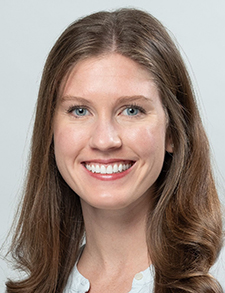A High Yield Review of Cannabinoid Hyperemesis Syndrome

Dr. Berry
Presenters: Rebecca M. Cantu, MD, MPH, Brittany M. Slagle, DO, and Sara Sanders, MD
The overall prevalence of cannabinoid hyperemesis syndrome (CHS) is 0.1% and is more common in young adults aged 18 to 39 years old. However, in patients with cannabis use disorder, the prevalence of CHS is up to 32%. Marijuana is the third most commonly abused drug in the U.S. after alcohol and tobacco. A 2019 youth risk behavior survey revealed that 36.8% of respondents reported yes to ever trying marijuana, and 21.7% reported using marijuana currently or within the last 30 days. The potency of the tetrahydrocannabinol (THC) component in marijuana is also increasing. CHS was first reported in Australia in 2004 in a case series of 19 patients. These numbers continue to rise, impacted by the changes in cannabis cultivation, more relaxed legal restrictions, and more favorable public opinion regarding its use.
The endocannabinoid system involves the vagus nerve, brainstem, and enteric system, and cannabinoids including THC activate the CB1 and CB2 receptors, which in turn slows the normal function of cellular pathways. Use results in mental dissociation, a decrease in gastric motility, anxiety, and heart rate, and a slowing of pain signals to the brain. If cannabis is used for nausea, then why is it causing nausea? A few explanations include the binding of THC to the gastric CB1 receptors causing reduced gastric emptying, lipid buildup of THC in the brain that can cause a “re-intoxication effect” when fat is broken down, the varying metabolism of drugs due to genetic p450 polymorphisms, and changes that occur in the body as a result of long-term use.
Diagnostic Rome IV criteria for CHS include stereotypical episodic vomiting resembling cyclic vomiting syndrome, presentation after prolonged and excessive cannabis use, relief of vomiting episodes by sustained cessation of cannabis use, and supportive behaviors such as improvement with prolonged hot baths or showers. Periods of remission can last days to weeks between attacks. Patients tend to have a prodromal phase where they experience nausea without emesis, anorexia, and abdominal pain. Many will increase their cannabis use in hopes of alleviating their symptoms. Hyperemesis develops next, with associated sympathetic overactivity, followed by the recovery phase.
There are significant differences between the adult and pediatric populations regarding CHS. Available literature shows that about one-third of patients in the pediatric population do not experience nausea and vomiting, and only half experience resolution of symptoms with cessation of cannabis use. This differs from the adult population where nearly 100% of patients experience nausea and vomiting as well as resolution of symptoms with cessation of cannabis use.
Management of an acute episode of CHS includes intravenous (IV) hydration, electrolyte correction, avoidance of parenteral pain control, and avoidance of unnecessary imaging and lab studies. Hot-water hydrotherapy provides temporary relief through the redirection of blood flow from the enteric system to the skin. Conventional anti-emetics typically do not work for these patients. Many patients have found relief with benzodiazepines, which enhance gamma-aminobutyric acid and inhibit neurotransmitters in the central nervous system. Haloperidol is another frequently used off-label medication. Though both of these medications have been found helpful, they are not without side effects, including QTc prolongation with haloperidol. Cannabis use is associated with arrhythmias in teenage patients, so a baseline ECG should be considered. Another medication that has found success is capsaicin, a topical cream applied to the abdomen that produces the sensation of heat on contact with skin and counteracts abdominal pain. Adult studies have shown a moderate decrease in pain scores and shorter lengths of stay with capsaicin use. Second-line medications to consider include aprepitant, olanzapine, and sumatriptan. Prevention of CHS includes emphasizing complete cessation of cannabis use and psychosocial interventions such as cognitive behavioral therapy. In some cases, amitriptyline can be used for withdrawal symptoms.
In summary, a suggested approach includes an initial evaluation with a comprehensive metabolic panel, ECG, and urine drug screen. Initiate IV fluid hydration and first-line medications such as lorazepam and capsaicin followed by second-line medications haloperidol, aprepitant, or amitriptyline if needed. Discharge criteria include tolerating a regular diet with good pain control. Patients can be discharged with oral lorazepam and haloperidol if needed. A referral for counseling for cannabis use disorder should be considered.
Key Takeaways
- CHS is a condition that affects both adults and teenagers, though it is more common in the young adult population, and its prevalence continues to rise.
- Clinical presentation includes stereotypical episodic vomiting resembling cyclic vomiting syndrome, presentation after prolonged and excessive cannabis use, relief of vomiting episodes by sustained cessation of cannabis use, and supportive behaviors such as improvement with prolonged hot baths or showers.
- Initial management includes IV fluid hydration and correction of electrolyte derangements. Conventional anti-emetics typically do not work for these patients. Many patients have found relief with benzodiazepines or capsaicin use.
Dr. Berry is chief resident at the University of Virginia in Charlottesville, Va. She is applying for a pediatric hospital medicine fellowship this year and is looking forward to her future career in pediatric hospital medicine.